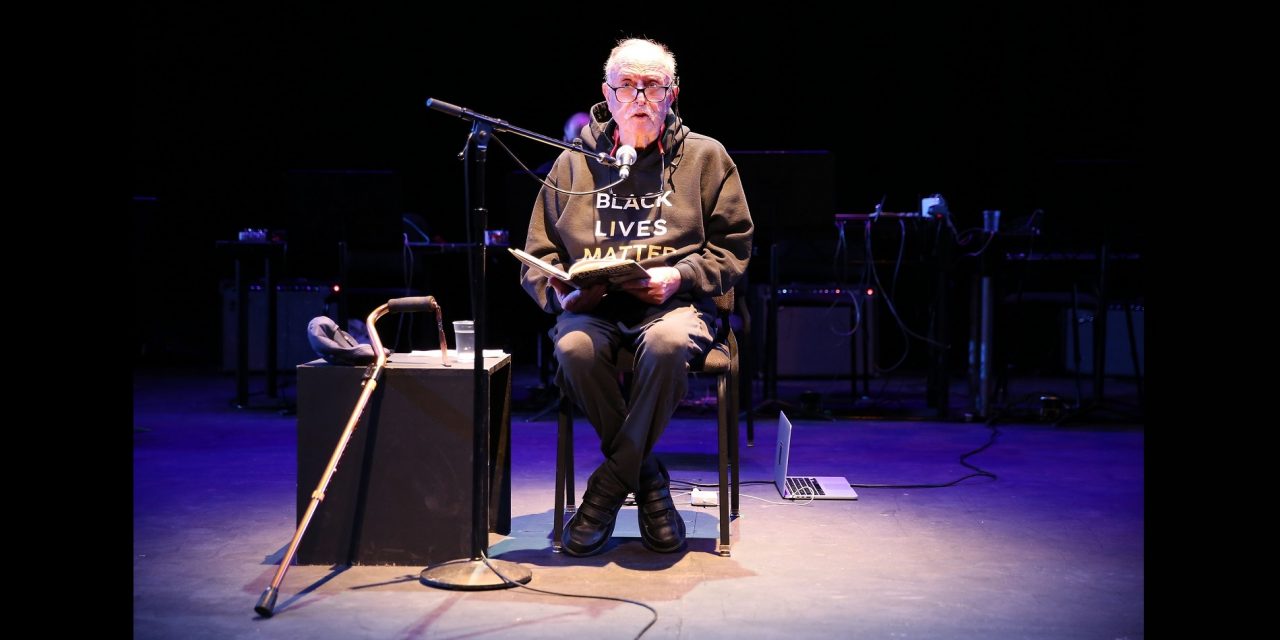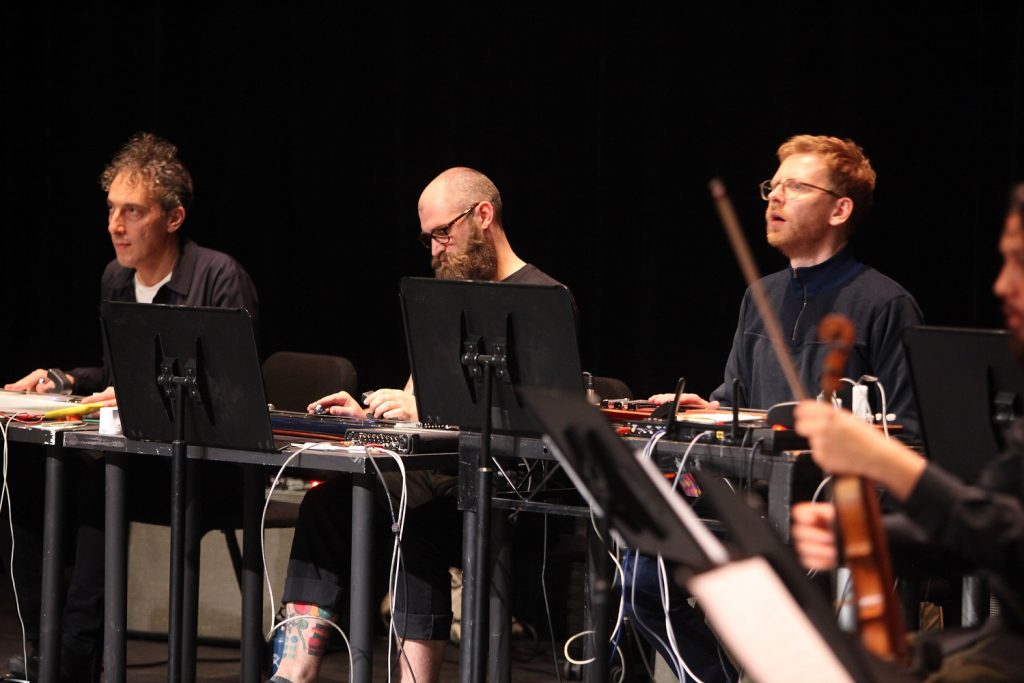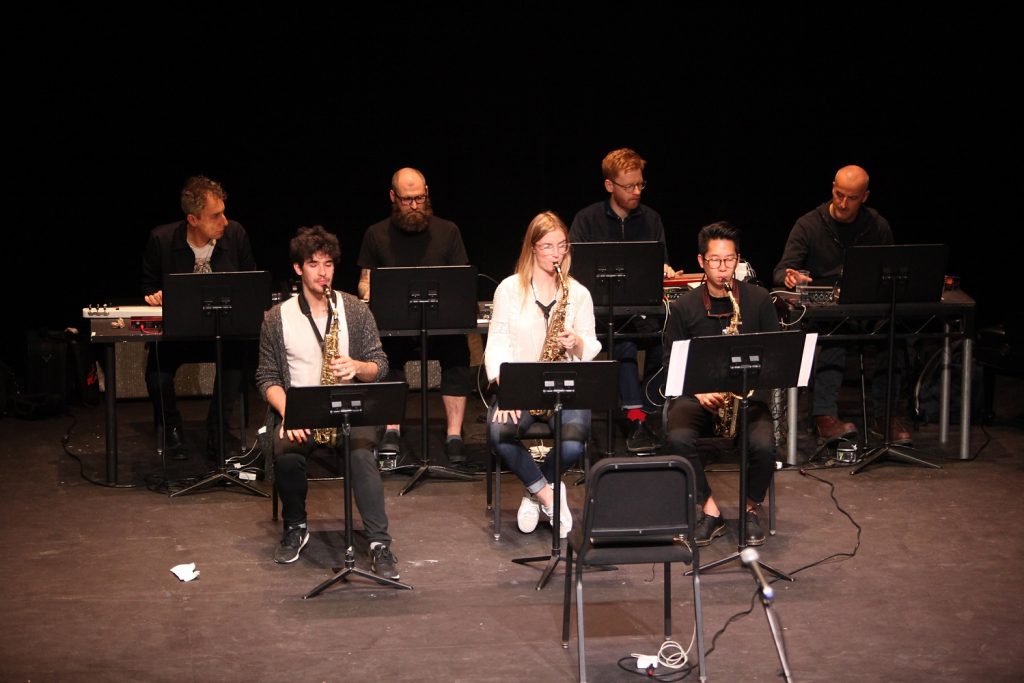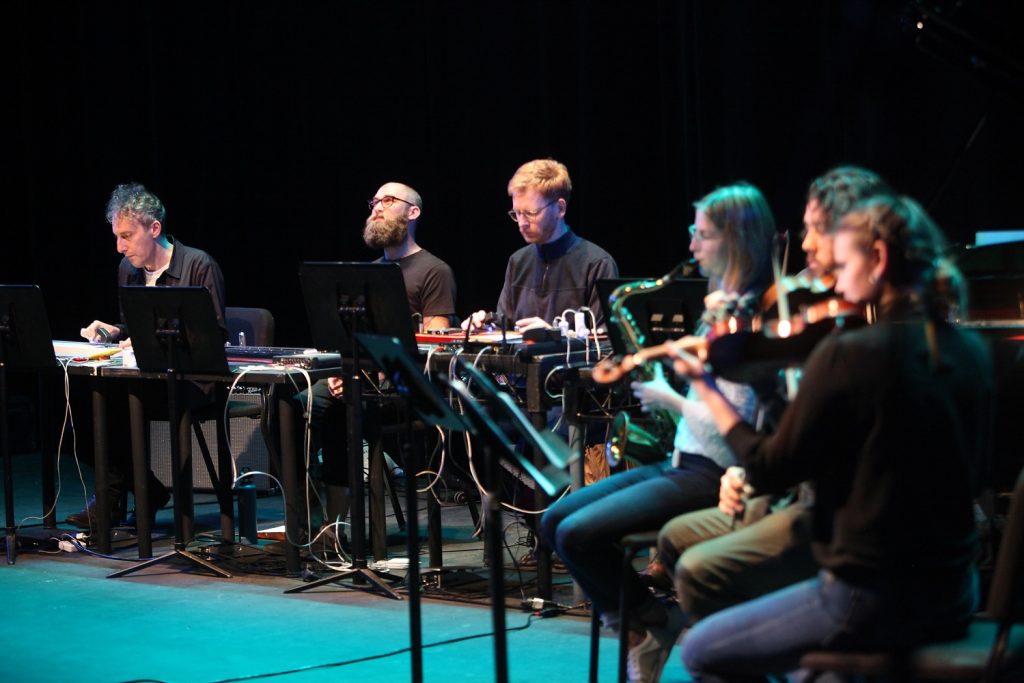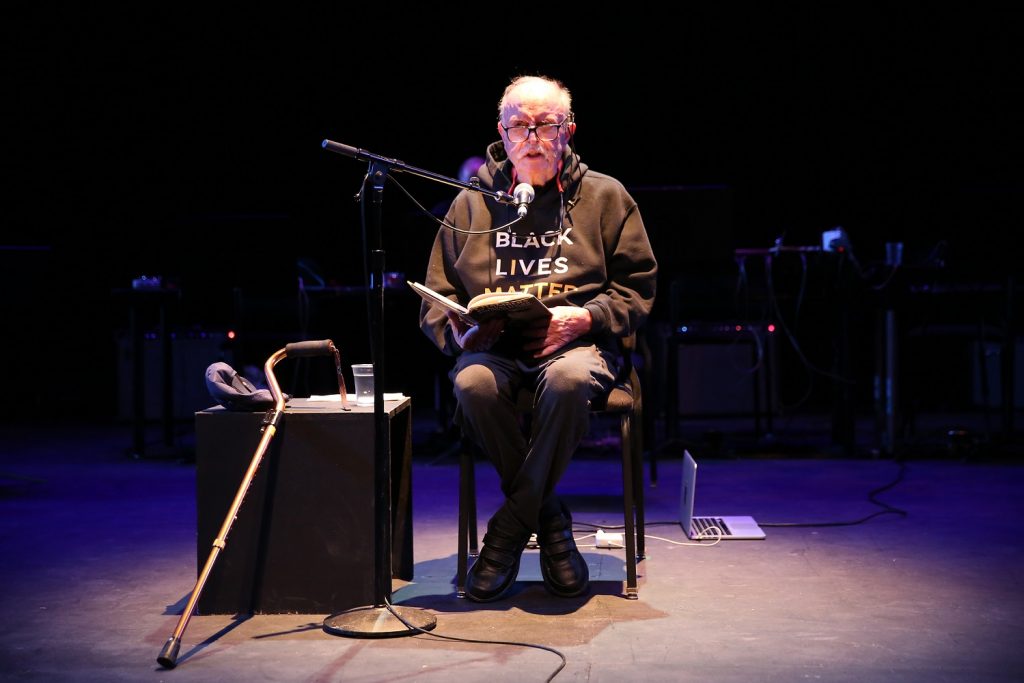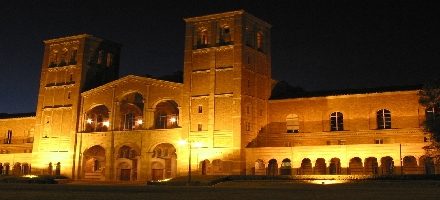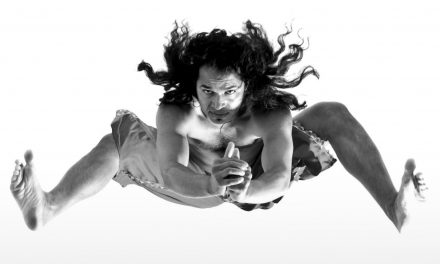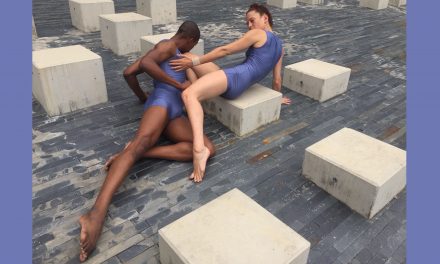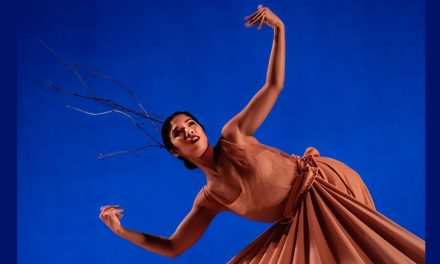To a sold-out house on March 26, 2019, the Roy and Edna Disney/CalArts Theater (REDCAT) presented the Ever Present Orchestra performing a full evening dedicated to the music of one of the most important American composers of the 20th century, Alvin Lucier. Lucier wrote that he was first inspired by the music of Steve Reich, but around 1982 shifted away from electronically rendered music to working with and composing for trained instrumentalists. Based in Zurich, the Ever Present Orchestra was founded in 2017 by Bernhard Rietbrock. It has many of Lucier’s works in its repertoire, and in the autumn of 2016, the Zurich University of the Arts celebrated Alvin Lucier and his work on behalf of his 85th birthday.
This article is not, however, a review of the concert as I am not a music critic. My introduction to and education of the electronic music genre was performing onstage to music by John Cage, David Tudor, Alvin Lucier, Toshi Ichiyanagi, La Monte Young, Philip Glass, Steven Reich, David Behrman, Christian Wolff, Gordon Mumma and other famous 20th century composers. The 1970s and 1980s was an exciting time to live and work in New York City and I am honored to have been a part of it while performing with the Merce Cunningham and Viola Farber dance companies.
My connection to Alvin Lucier goes back to when I was a member of the Viola Farber Dance Company. Lucier became the company’s Music Director and in 1972 Farber choreographed a work titled DUNE to his I am Sitting in a Room (1969). Between 1972 and 1977, Farber choreographed several other works to Lucier’s music. They were: Poor Eddie (1972), music title: World Music System 1 For Bowed String Instruments (1972); Soup (1973); Spare Change (1973), music title: North American Time Capsule (1967); Willi I (1974), original score title The Fires In The Minds Of The Dancers; No Super, No Boiler (1974); Houseguest (1974), Music: sound of Lucier opening and shutting exit doors in the theaters; Duet for Will and Susan (1975); Sunday Afternoon (1976), music title: Vespers; Brazos River (Video for Dance, 1977); Music by David Tudor and Lucier; and Lead Us Not Into Penn Station (1977).
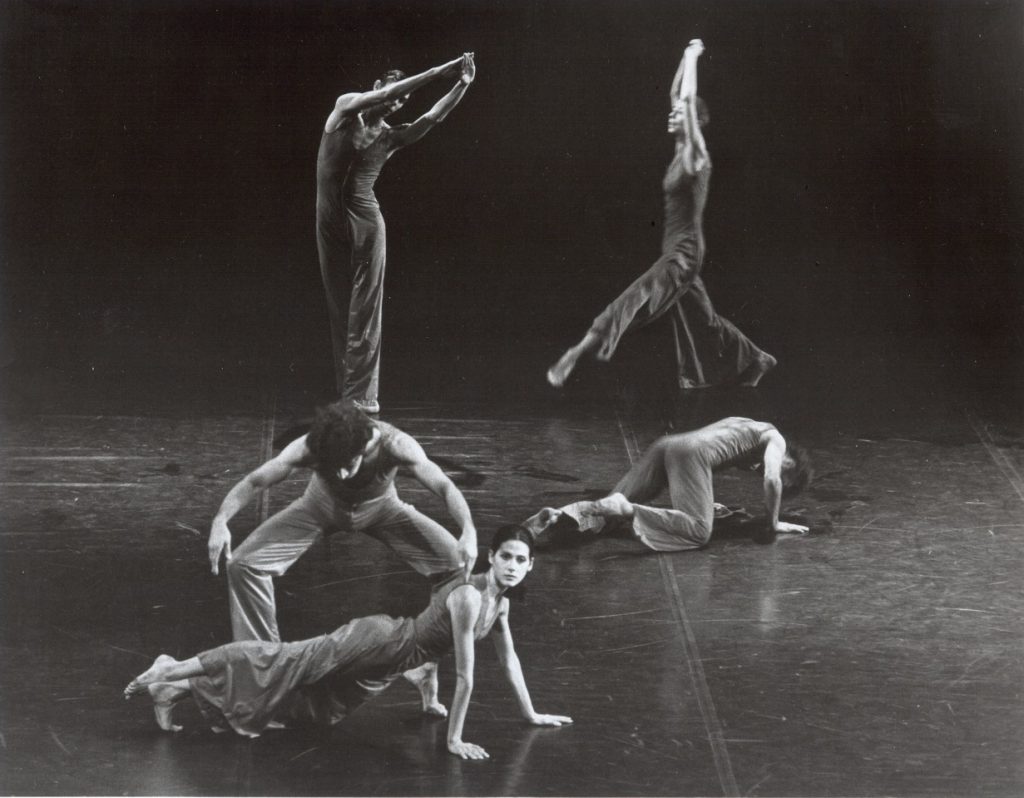
Top L to R: Jeff Slayton, Viola Farber. Bottom L to R: Andé Peck, Anne Koren, Willi Feuer in Viola Farber’s “Willi I” (1974) – Music by Alvin Lucier – Photo: Johan Elbers
For Willi I, Lucier asked each of the eight dancers to tell him what their favorite sound was. Mine, for example, was rocks falling downhill over other rocks. Lucier recorded those sounds to create an eight-track score. As each dancer entered on stage, their sound accompanied them. As they left, so did their sound. It was what inspired the music’s title, The Fire In The Minds Of The Dancers.
The program stated that Lucier was a pioneer in “making what is normally inaudible audible, but also for his very idiosyncratic way of making the audible visible or spatially tangible.” This was evident in the different formations for the musicals during the five works that the Ever Present Orchestra performed at REDCAT and how, therefore, the sound resonated around, across and through the space. The first piece was titled Ricochet Lady (2016) for solo glockenspiel. It involved the musician (Trevor Saint) performing while facing a wall, his back to the audience. As Saint performed repetitive chromatic patterns moving up the music scale, the sounds echoed off the wall and into the theater. It was quite an amazing and intense experience.
Braid (2012), Two Circles (2012) and Semicircle (2017) involved long sustained notes. Braid felt sad and lonely, whereas Semicircle was hypnotic and left me with a sense of waiting for the resolve of some unknow event. I never found out the what, but I did conclude that it was never going to arrive. The fifth work was a brand-new piece that Lucier had just recently completed. It was added after the program went to print, so the title was announced. I am not totally certain what I heard was correct, but the title that my musician friend and I settled on was Eco. Composed for involved violin, electric guitars, flute and glockenspiel, the work was a shorter and more atmospheric work.
Following a brief intermission, Lucier performed I am Sitting in a Room. After forty-seven years since I last performed to this magical work, I had the pleasure of sitting, watching and listening to Lucier perform it live.
Lucier sat down center stage in front of a single microphone. As the lights lowered, he opened a book and began reading “I am sitting in a room, the same as the one you are sitting in now.” He then went on for approximately one minute describing the process of recording what he was saying and then replaying it repeatedly until what we heard was unrecognizable from the original explanation. As he stated during the narrative, there was a only the rhythm of his voice that remained, along with a sustained and high-pitched drone. Even after the words became sounds (music), I could always make out the original six words, “I am sitting in a room.”
The evening was personally satisfying to after so many years, to be in the presence of such a talent, and to be able to enjoy his music without the distraction of performing with it.
The 12 members of the Ever Present Orchestra included: Bernhard Rietbrock, Oren Ambarchi, Jan Thoben (electric guitars; Trevor Saint (glockenspiel and electric guitar); Charles Ng, Valentine Michaud, Joan Oliver Arcos (saxophones); Vera Weber (piano); and Christina Moser, Beatrice Harmon, Kris Rahamad, Rebekka Thies (Violins).
Other works of Lucier’s in the Ever Present Orchestra’s repertoire include: Double Helix (2018), Flight Path (2018), Tilted Arc (2018), Hanover (2015),Two Circles (2012), Criss-Cross (2013), Panorama II (Copied Lines) (2011), Shadow Lines (2013), Firewood (2013), August Moon (2015), Just Before Dark (2010), and On the Carpet of Leaves Illuminated by the Moon (2000/2012)
For more information on Alvin Lucier, click here.
For more information on the Ever Present Orchestra, click here.
For what is being presented at REDCAT, click here.
Featured image:

